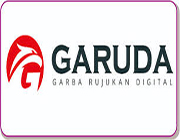DIVERSIFICATION OF FOOD CONSUMPTION BASED ON LOCAL POTENTIAL OF TARAKAN CITY
Abstract
ABSTRACT
Â
Diversification of food consumption will provide great benefits if it can explore and develop potential local food sources. However, the diversification of staple food or food sources of carbohydrates which are widely consumed by the people in Tarakan City, still has a single staple food pattern, namely rice. Therefore, a study related to the diversification of non-rice food based on local food needs to be carried out. The specific objectives are to analyze the potential of local food resources in Tarakan City, to analyze food consumption patterns and the level of household food diversification in Tarakan City. ResearchThis technique uses a survey technique with a sample of households in four districts in the City of Tarakan with the sampling technique used is a nonprobability sampling technique with a quota sampling method. The data analysis method used is quantitative descriptive analysis and household dietary diversity score (HDDS). The analysis result shows p Rice production in Tarakan City tends to decline, while the production of cassava and sweet potato shows an increasing trend which indicates the potential for diversification of food production in Tarakan City. Broadly speaking, the pattern of diversification of people's food consumption in Tarakan City is quite diverse based on the amount, quality, and variant, this is shown from the expenditure of various protein sources. However, the diversification of food sources of carbohydrates needs to be studied because of the high expenditure on carbohydrate sources for rice. The level of diversification of food consumption in Tarakan City based on the value of the household food diversity score (HDDS) is in the high category, namely having consumed more than six types of food sources in a day.
Â
Keywords: Diversification, Consumption, Food, Household.
Keywords
Full Text:
PDFReferences
Adewumi, M. O., & Animashaun, J. O. (2013). Households’ dietary diversity, farm income, and technical efficiency correlate with Empirical evidence from small-scale farming households in Nigeria. Agris On-Line Papers in Economics and Informatics, 5(4), 3–11.
Ariani, M., Gatoet, H., Hardono, S., Tonny, S., Wahyudi, S., Sosial, P., Dan, E., Pertanian, K., Penelitian, B., & Pengembangan, D. (2013). Laporan Kegiatan Kajian Isu-Isu Aktual Kebijakan Pembangunan Pertanian 2013 Kajian Strategi Pengembangan Diversifikasi Pangan Lokal. http://pse.litbang.pertanian.go.id/ind/pdffiles/anjak_2013_06.pdf
Arimond. (2010). Simple Food Group Diversity Indicators Predict Micronutrient Adequacy Of Women’s Diets In 5 Diverse, Resource-Poor Settings. J Nutr 140: 2059–2069.
BPS. (2019). Kota Tarakan Dalam Angka 2019.
FAO. (2013). Guidelines For Measuring Household And Individual Dietary Diversity. Roma (IT): FAO.
Harini, R., Ariani, R. D., Supriyati, S., & Satriagasa, M. C. (2019). Analisis Luas Lahan Pertanian Terhadap Produksi Padi Di Kalimantan Utara. Jurnal Kawistara, 9(1), 15. https://doi.org/10.22146/kawistara.38755
Melani, V. (2014). Validasi Household Dietary Diversity Score (HDDS) Sebagai Metode Alternatif Dalam Mengidentifikasi Rumah Tangga Rawan Pangan Di Wilayah.
Rahajeng, G. Y. (2015). The Effect Of Household Characteristics At Different Level Of Incomes On Food Consumption Diversification In Palembang. Sriwijaya University.
Saputri, R., Lestari, L. A., & Susilo, J. (2016). Pola konsumsi pangan dan tingkat ketahanan pangan rumah tangga di Kabupaten Kampar Provinsi Riau. Jurnal Gizi Klinik Indonesia, 12(3), 123. https://doi.org/10.22146/ijcn.23110
Savy M, Prevel YM, Sawadogo P, Kameli Y, D. F. (2005). Use Of Variety/Diversity Scores For
DOI: https://doi.org/10.35334/borneo_saintek.v4i2.1586
Refbacks
- There are currently no refbacks.
Copyright (c) 2022 Jurnal Borneo Saintek









